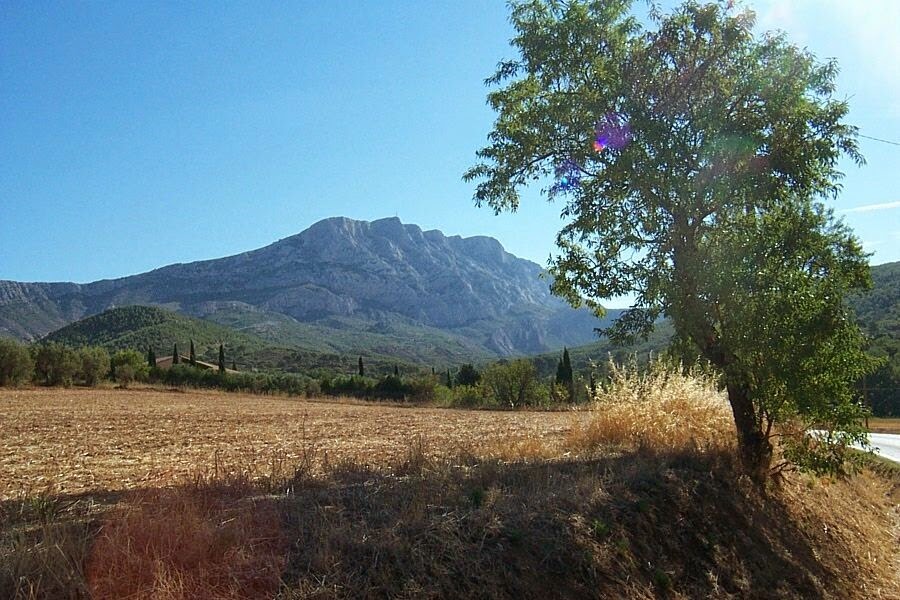Today I’ll take you on a tour of Provence, in the south of
France.
We stayed at Aix-en-Provence, originally a spa town, Aquae
Sextiae, founded by the Romans. It has a labyrinth of small alleyways, squares
and fountains – it’s known as the City of a Thousand Fountains- as well as
a wide boulevard, the Cours Mirabeau, which is lined with plane trees, and also
with shops and cafes.
On our first day, we had a drive out to Montagne Saint
Victoire, famous because of its appearance in many of the paintings by Paul
Cezanne, who was born and lived in Aix.
Day Two was a trip through the Camargue region, the wide delta
of the River Rhone, now a National Park, and famous for its white horses, black
bulls and pink flamingos. We didn't see any horses, and only saw the flamingos from a distance, but we did see the bulls.
From here we continued to Arles, one of my favourite
Provencal cities. The first stop was at the huge Roman amphitheatre, which can
seat over 20,000 spectators, who flocked to chariot races in Romans, and nowadays to concerts and
plays, as well as the bull-fighting festivals in April and September.
After this, it was a time for a long cold drink – and where
better than in the square overlooked by Van Gogh’s Café Terrace de Nuit. Van Gogh lived
in Arles for about two years and produced over 200 paintings during that time.
On our third day we headed into the Luberon Mountains, stopping
at some of the small villages which cling to the hillsides.
Roussillon is situated on the world’s biggest vein of ochre
rock. The cliffs all around ranged from gold to deep orange, and the houses in
the small village all have ochre walls of varying shades.
Gordes, perched high on a rocky outcrop, has a castle built
in the 12th century. From its terrace, there is a wonderful view of the valleys
below and the Vaucluse mountains in the distance.
Our last day in Provence included a visit to the awesome
Pont du Gard, the Roman aqueduct built in the 1st century, the highest and one
of the best preserved Roman aqueducts. It originally carried over 44 million
gallons of water each day to the fountains, public baths, and homes in the city
of Nimes.
Our final visit of the tour was to the city of Avignon. I’ve
stayed here several times, notably once during the annual Avignon Festival in
July, when there are shows, plays, concerts etc in various venues, plus ‘fringe’
events – or you can sit at a café in the main square all day and you’ll be
entertained by a variety of street theatre performers.
The Papal Palace in Avignon dates from the 14th century when
seven successive Popes were based there instead of in Rome.
Equally famous,
because of the folk song Sur le pont d’Avignon, is the bridge, although now only four of the original 13th
century 22 arches remain. The rest were either swept away in a catastrophic
flood in 1669, or gradually collapsed.
I’ll finish this short tour of Provence with
some photos of typical Provencal scenery – sunflowers, lavender, and vineyards.

















On my list for a summer road trip :)
ReplyDeleteDefinitely worth a visit, Claudia - and I've only covered a small part of it here, although I've been to many other places.
ReplyDelete